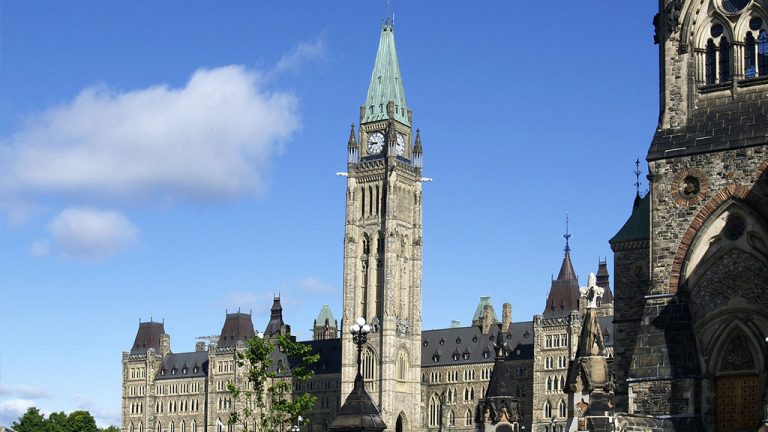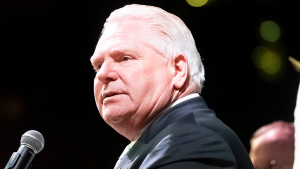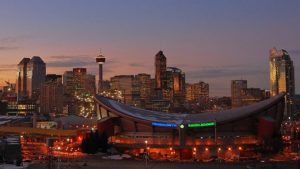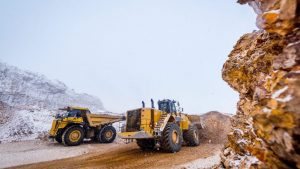The Grandview Highway Wal-Mart in Vancouver is scheduled to open in 2009 and will be the first store that the company has not owned, but renovated, in Canada.
Sustainable Building
The Grandview Highway Wal-Mart in Vancouver is scheduled to open in 2009 and will be the first store that the company has not owned, but renovated, in Canada.
“It will be the first urban building we have transformed,” said company spokesman Kevin Groh.
The company has placed stores in malls, but has never taken over a pre-existing retail outlet.
The renovation will include some aspects of Wal-Mart’s new green building policy, but because it does not own the building, those features will not be as comprehensive as if it was a new-build, Groh said.
“(It will be) an interpretation of the Wal-Mart store in an existing building” said Groh. “We are not reinventing the business.”
The $5.5 million project will serve as Wal-Mart Canada’s first toehold in the Vancouver commercial market as it slips into space already zoned for a big-box outlet.
“We have taken over the old Costco outlet and our intention is to turn it into a 113,000 square foot Wal-Mart superstore,” he said. Superstores feature a grocery component.
The Grandview superstore will be smaller than other Wal-Marts that have opened in the past year in B.C., which can reach up to 215,000 square feet in size.
In July, the company opened a South Surrey superstore, which is the largest in B.C. to date. The outlet was the second in B.C. and the 36th in Canada since mega-stores were introduced in 2006.
The Grandview building is owned by the McLean Group of Companies and the renovation is being carried out by Norson Construction Ltd. of North Vancouver, with the design by the Abbarch Partnership Architects of Toronto.
Abbarch architect Daryl Kruger said the major challenge was dealing with an existing building, built in the mid-1950s.
A complete renovation was needed on the roof.
“It still had the original roof,” he said, adding it had no insulation and had so much moss growing on it that it appeared green from the inside of the store.
“That’s all gone now,” he said, adding the newly installed and insulated roof will conserve energy.
Kruger said the building, which has a history that includes a mattress factory and several large retailers, has some attractive features such as a band of windows around the exterior walls which allow natural light to enter the structure.
As well, those windows can be opened and allow natural ventilation.
Groh said green building and energy conservation methods would still be used in the Grandview conversion.
“We hope to do some retrofitting to gain lighting efficiencies and the same with the refrigeration and all the energy consuming elements of the building,” he said.
Also, the store is making a commitment to operate more efficiently.
It will attempt to have zero waste, move product and stock more efficiently, and stock products that are environmentally friendly and come in environmentally friendly packaging.
In August Wal-Mart Canada president and CEO David Cheesewright announced that new stores would employ a number of green building and operating measures aimed at energy reduction and conservation.
These new outlets, designated as Wal-Mart HE stores, would reduce energy consumption by 30 per cent by such means as recapturing waste heat from refrigeration units, using LED lights for signage and reducing the amount of light used in display areas and throughout stores.
In addition, low-flow water fixtures would be installed. The 30 per cent energy reduction figure is based upon 2005 operating costs as a bench mark.
Cheesewright said there would be wise use of construction materials, eliminating ceilings and changing chemical-intensive flooring.
Groh said that Wal-Mart’s green strategy is a compilation of experiences at its other stores that have been built in Canada.
“We have learned from those experiences,” he said.
The newly-opened Surrey store features no ceiling and uses environmentally friendly building materials.
Cheesewright said the new Wal-Mart HE stores will come on stream starting in February 2009.
He added that sustainability makes not only good environmental sense, but also good business sense.
“For Wal-Mart, there is no difference between environmental sustainability and business sustainability. It’s the same thing,” he said.
Groh said the company still retains ownership of the commercial site on Vancouver’s Southeast Marine Drive, where it has proposed to build a major new store.
He said Wal-Mart still plans to build the store, but is not sure when it might seek and gain city hall approval.
The new store proposal failed to gain support from past city councils.
Wal-Mart has opened new stores in 2008 on Vancouver Island, the B.C. Interior and Lower Mainland.
In May, it announced that by January 31, 2009, it would have completed 25-27 new projects in Canada ranging from additional superstores to new discount centres as well as some older discount centres that are renovated as new superstores.










Recent Comments
comments for this post are closed